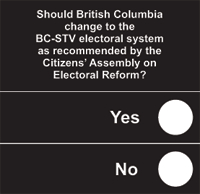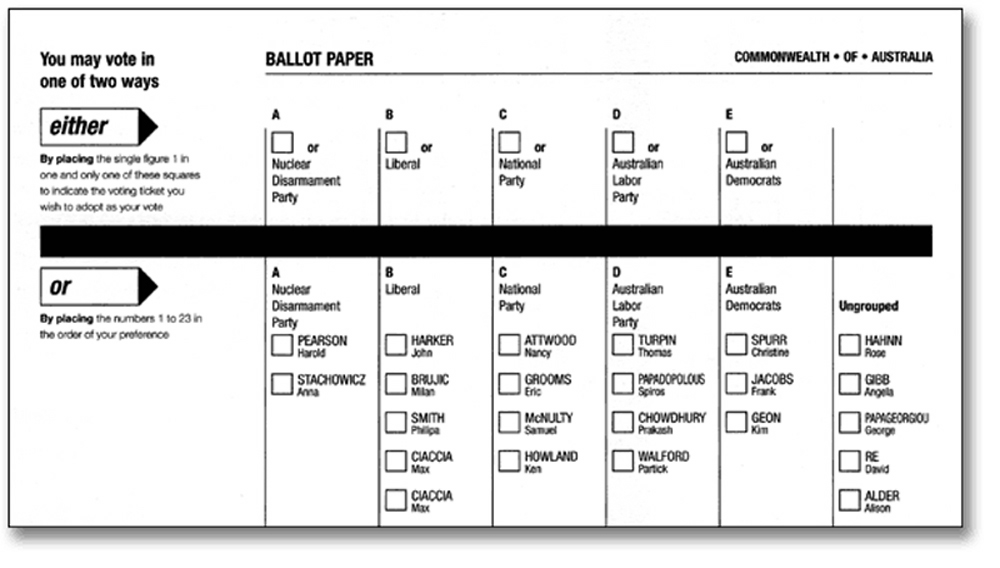|
Single Transferable Vote (STV)
adapted by TeeERead© • a voting system designed to minimize wasted votes* and provide proportional representation** while ensuring that votes are explicitly for candidates rather than a political party. • it achieves this by using multi-seat voter constituencies*** and by transferring votes that would otherwise be wasted. • STV initially allocates an individual's vote to their most preferred candidate, and then subsequently transfers unneeded or unused votes after candidates are either elected or eliminated, according to the voter's stated preferences |
|
|
* wasted vote - any vote which does not help to elect a candidate 100% bullshite ** proportional representation- aims for a closer match between the percentage of votes that groups of candidates obtain in elections and the percentage of seats they receive (this is the Key to STVing) *** voter constituency - election district e.g. Burnaby Centre; the BC-STV will reduce the 79 districts to 15-25 multi-seat districts STV Example - Ice Cream Vote |
see Referendum results here
Two Other forms of elections

